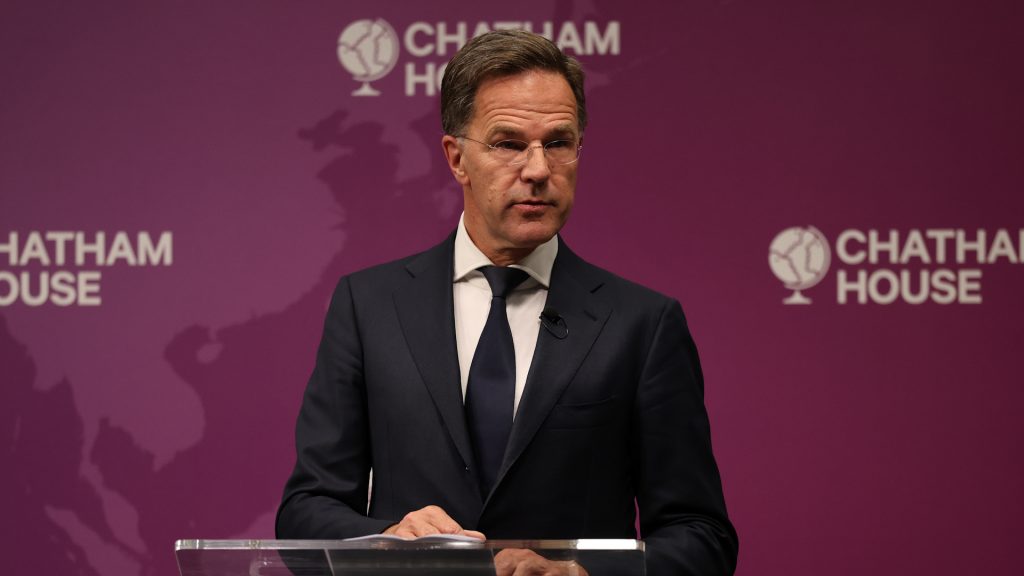NATO demands 400% arms buildup as Russia outpaces West

NATO Secretary General Mark Rutte urged member states to increase air and missile defense spending by 400%, calling it essential to counter Russian threats and meet U.S. expectations. Rutte spoke at Chatham House in London on Monday, June 9, and said Europe needs a major step forward in military readiness and joint defense to prepare for future conflicts.
Facing rising security threats, Rutte’s speech, “Building a Better NATO,” detailed his goals for the Alliance ahead of an upcoming summit in The Hague.
“We see in Ukraine how Russia delivers terror from above, so we will strengthen the shield that protects our skies,” Rutte said in prepared remarks. He warned that the danger from Russia will remain even if the war in Ukraine ends.
Rutte said NATO’s latest battle plans and capability targets require tens of thousands of armored vehicles, millions of artillery shells and a sharp expansion in logistics and cyber capacity. He cited Russian rearmament and noted that Moscow was expected to produce 1,500 tanks, 3,000 armored vehicles and 200 Iskander missiles in 2025 alone.
Unbiased. Straight Facts.TM
American allies are projected to jointly procure at least 700 F-35s and expand their inventories of drones and long-range missile systems.

How does this relate to Trump’s defense spending demands?
Rutte’s proposal aligned with a broader push to meet President Donald Trump’s call for NATO members to spend 5% of their GDP on defense. To address concerns from allies, Rutte proposed a compromise: 3.5% on direct military spending and 1.5% on broader security measures, including civil infrastructure upgrades and cyber defense.
Currently, NATO guidelines require a country to allocate at least 2% of its GDP to defense. Only 22 of the alliance’s 32 members meet that threshold, according to NATO data. Every NATO country falls short of Trump’s 5% defense spending goal.
How are European countries responding?
The call came hours after Ukrainian officials reported one of the largest drone assaults of the war. Ukrainian air defenses intercepted 479 Russian attack drones overnight on June 9, according to the country’s air force. The scale of the strike triggered Polish and allied fighter jets to scramble in nearby airspace as a precaution.
The U.K. announced plans to raise defense spending from 2.3% to 2.5% of GDP by 2027, with a goal of reaching 3% at a later date. Meanwhile, Poland led NATO in defense spending, contributing more than 4% of its GDP, while the U.S. spent around 3.2%, according to NATO estimates.
Germany planned to increase its military spending to 3% of GDP by 2027 and 3.5% in the years that follow, according to economic forecasts from Goldman Sachs Research. The spending hike is part of a broader fiscal package backed by Chancellor Friedrich Merz’s coalition, which exempts defense outlays above 1% of GDP from the country’s debt.
In addition to boosting its armed forces, Germany is reviving its civil defense infrastructure. The country currently operates only 580 bunkers — enough to shelter about 5% of its population. Officials aim to create 1 million new shelter spaces by retrofitting metro stations, tunnels and public buildings. The project could cost up to $45 billion over the next decade.
France, Italy and Spain are also expected to increase military spending by 0.3 percentage points above previous forecasts, reaching 2.9%, 2.8% and 2.7% of GDP, respectively, by 2027.
Why is urgency growing now?
European officials said the timeline for a potential renewed Russian military buildup could be as short as four years. As NATO braces for the future, Rutte emphasized that “hope is not a strategy” and called for immediate investment in deterrence.





